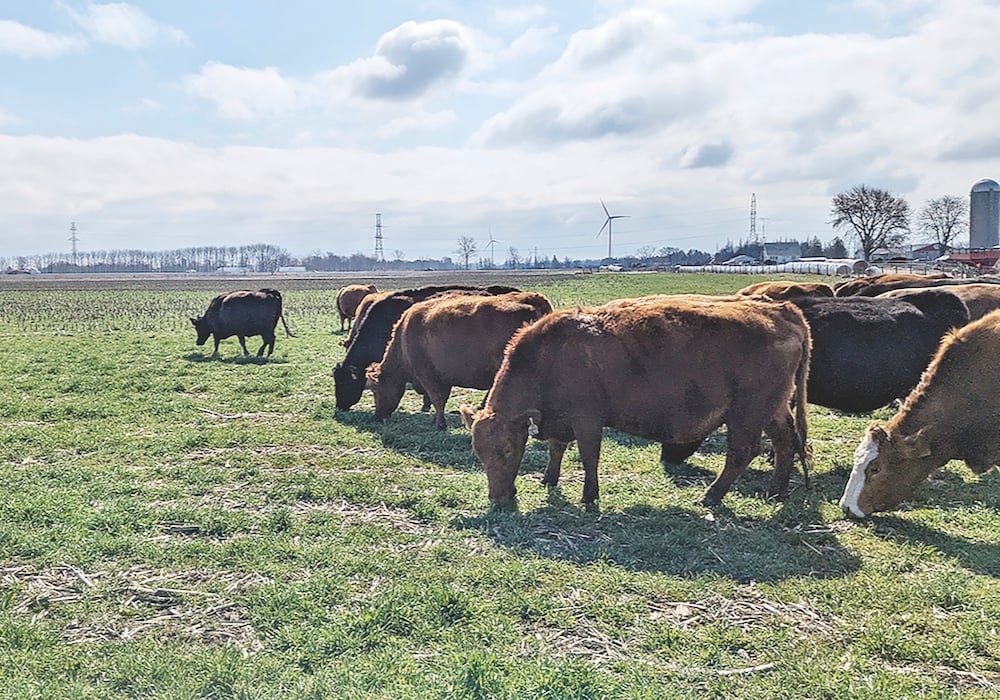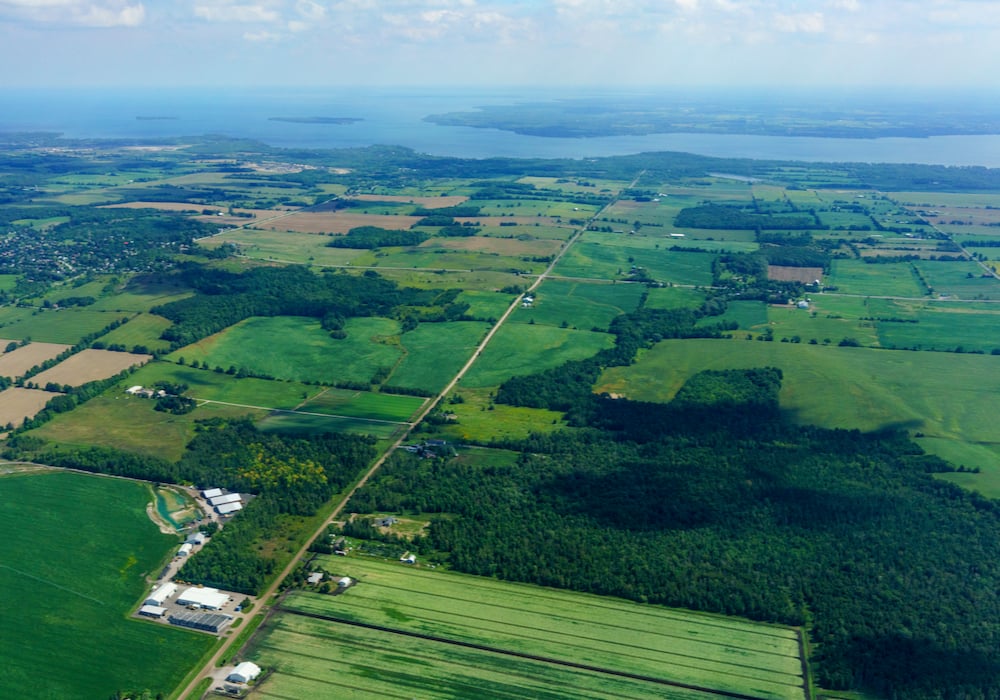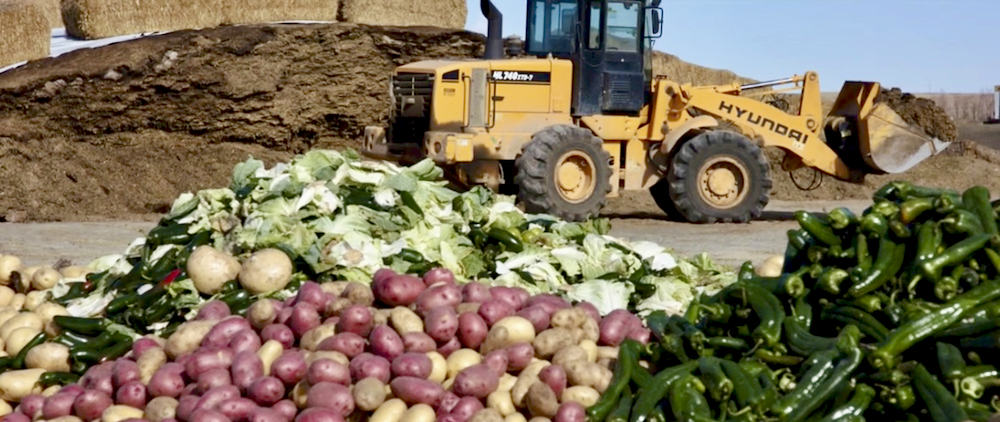Livestock pitched as a great food waste upcycler

Canada wastes about half the food it produces, but cattle can convert that waste into protein production.
Read Also

Wilmot land expropriation questioned
Expropriation of land in Wilmot Township in the Region of Waterloo is a window into Ontario’s challenges as industrial and…
To highlight that ability, the next documentary in a five-part series from the Canadian Cattle Association focuses on feedlots and their role in recycling food waste.
Why it matters: Food waste takes up space in landfills and its breakdown adds methane to the atmosphere, so there’s value in feeding it to livestock instead.
“There are concerns folks have about the environment and sustainability we want to address,” said Emma Cross, Canadian Cattle Association manager of public and stakeholder engagement.
“We’ve found over the years that, by and large, Canadians do feel good and have positive sentiments about the Canadian beef industry.”
The documentary, called Reduce, Reuse, Ruminate, was released April 24 to coincide with Stop Food Waste Day. It is the third of a five-part mini-documentary series that showcases the benefits of raising Canadian beef.
Mike Buis, of Buis Beef in Chatham-Kent, is in the documentary and said the high cost of land and lack of pasture prodded him to look for affordable alternative feed sources, whether grazing his cattle on corn stalks or partnering with local processors.
Buis said there were lessons to learn as an early adopter. For example, the cattle loved onions, but their meat was infused with a slight onion flavour and aroma. Carrots, which are 90 per cent water, gave the fat a slightly yellow hue and didn’t provide sufficient nutrients.
“We take our feeds very seriously. We pull samples and analyze them,” Buis said. “Then, we run them through our computer programs and make sure we have all the essential nutrients and everything we need to make sure our cattle grow properly.”


photo:
Reduce, Reuse, Ruminate, courtesy of CCA (screengrab)
Buis has fed chopped rye, ear corn and soy hull from his operation, as well as sweet potato peelings from a fry processor, sweet corn husks and ear discards from a sweet corn processing facility and brewers’ grain from Labatt’s Brewery in London.
“In the documentary, we talk specifically about feed regulations created by the Canadian Food Inspection Agency, as well as working with nutritionists to ensure that any of these byproducts are a part of a balanced diet for cattle,” says Cross.
Ryan Kasko, a producer from Coaldale, Alta., discussed a decision one year to feed 50,000 tonnes of raw french fries to cattle at one of his feedlots.
Bob Lowe of Bear Trap Feeders in Nanton, Alta., said he never imagined feeding dragon fruit to cattle, but he now he has seen it.
“It’s perfectly edible food that, for one reason or another, consumers don’t like the look of it,” said Lowe in the documentary.
While consumers may balk at a blemished apple or a crooked carrot, visual appeal isn’t critical to cattle. Nutritional quality is the measure, said Buis.
And food safety for cattle doesn’t extend to produce that falls on the floor during processing, as it would for human consumption.
“We’re not concerned if there’s a bit of dirt on it.”
Buis said the documentary shares two equally important aspects of cattle production: the essential role of cattle in the sustainable, regenerative agriculture movement and the importance of producers being open to lower-cost feed alternatives that will assure long-term beef production.
Like previous documentaries, Guardians of the Grasslands and Too Close to Home, the new Reduce, Reuse Ruminate presentation spent time on the film festival circuit and garnered feedback before local screenings were scheduled.
WILDsound Feedback Film Festival reviews said the documentary provided a balanced, hopeful approach that didn’t talk down to the audience, while giving strong graphics and information on the supply chain and upcycling solutions to combat food waste.
Many viewers noted that, while they were aware of food waste, loss and food insecurity, they hadn’t given much thought to the greenhouse gas production of food diverted to landfills.
Amanda Brodhagen, an Ontario beef producer, said the documentary highlights the multi-faceted impact of food loss and waste and how its use by cattle creates a secondary landfill benefit. She’s also a councillor for the Township of Perth East, so she understands the landfill challenge.
“Landfill capacity is a big issue, especially in Ontario, with the population growing,” she said. “It is going to become a bigger issue over time.”
The average person doesn’t ponder the lifespan of a landfill site, especially the sliding scale formula in which life expectancy declines as community growth accelerates.
Brodhagen said 58 per cent of food produced in Canada goes to waste, about 40 per cent of that occurring at the retail and consumer levels, so partnerships between feedlot producers and processors can divert waste, provide affordable cattle feed alternatives and lower business disposal costs.
Source: Farmtario.com

